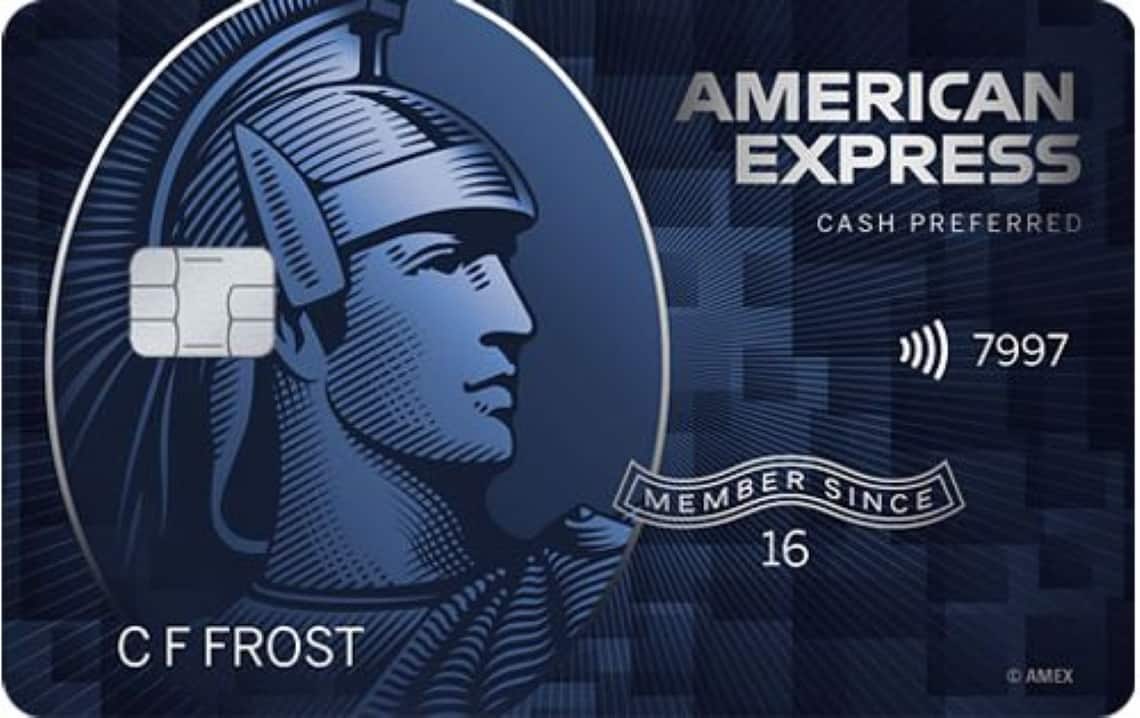Last Updated on April 15, 2024 by Archie Biggs
Balance Transfer Credit Cards: An Essential Guide for Debt Management
Understanding Balance Transfers
Credit card balance transfers can be an effective tool to manage debt. By moving the balance from one credit card to a different one with a lower interest rate, you can potentially save hundreds or even thousands of dollars in interest over time.
What Exactly is a Balance Transfer?
A balance transfer involves moving debt from a high-interest credit card to another card offering a lower interest rate, preferably one with an introductory 0% period. This is akin to using one card to pay off another, resulting in less interest paid and thus providing more funds to pay down the debt more rapidly.
Important Factors to Consider
The Introductory Period
Many credit cards offer a 0% introductory Annual Percentage Rate (APR) on balance transfers. This implies you won’t incur any interest on the transferred balance for a specified duration, usually between 6 to 18 months.
Balance Transfer Fees
Balance transfer fees are another critical factor. These charges are typically a percentage of the transferred amount. When deciding if a balance transfer makes sense for you, remember to take this fee into account.
The Credit Limit
Ensure the new card’s credit limit can accommodate the balance you aim to transfer. Be aware that transferring a high balance may affect your credit utilization ratio, which could lower your credit score temporarily.
Post-Introductory APR
Once the introductory period ends, any remaining balance will be subject to the card’s standard interest rate. Understand this rate and compare it with your current card’s rate to determine the long-term benefits.
Eligibility and Approval
Each credit card issuer has its eligibility criteria for approval. Factors such as your credit score, income, and existing debt levels could impact your eligibility.
The Benefits of Balance Transfer Credit Cards
No Interest Charges
One of the significant benefits of balance transfer credit cards is the opportunity to avoid interest charges temporarily, allowing you to save money on interest expenses and potentially pay your balance off sooner.
Debt Consolidation
If you’re looking to simplify your payments by merging them into one bill, a balance transfer card can help. This consolidation can make it easier for you to pay on time.
Improve Your Credit Score
Paying off your balance could improve your credit score by reducing your credit utilization ratio. Additionally, keeping your original account open after paying off your debt could increase your overall credit limit.
Choosing the Best Balance Transfer Credit Cards
Many of the top balance transfer credit cards offer a 0% introductory APR on balance transfers, with intro periods extending well over a year. If you want to refinance your credit card debt and save on interest, a balance transfer card is a practical choice.
Risks and Drawbacks of Balance Transfer Credit Cards
While balance transfer credit cards can offer considerable benefits, they are not without potential drawbacks. It is crucial to understand these before you make your decision.
Potential for High Post-Introductory Rates
While introductory rates may be appealing, the standard interest rates that kick in after the promotional period can be considerably higher than your original card’s rate. It’s essential to understand what this rate will be and how it could impact you if you haven’t fully paid off your balance by the end of the promotional period.
Balance Transfer Fees
Balance transfer fees can erode the savings you gain from the lower interest rate. These fees typically range from 3% to 5% of the transferred balance. Be sure to calculate whether your savings from the lower interest rate outweigh the balance transfer fee.
Impact on Credit Score
Transferring a balance could potentially impact your credit score. The new credit inquiry, the change in available credit, and the change in credit utilization could all affect your score, albeit often temporarily.
The Temptation to Spend More
With a new credit card and a potentially higher available credit, the temptation to increase spending can be significant. Remember, the goal of a balance transfer is to reduce your debt, not to accrue more.
The Bottom Line
Balance transfer credit cards can be a potent tool in your arsenal for managing and reducing debt. However, they are not a magic bullet, and they come with their own set of considerations and potential drawbacks. Careful consideration and understanding of the terms, conditions, and implications are necessary to make the best choice for your financial situation.
Frequently Asked Questions
Are there risks associated with balance transfers?
Yes, potential risks include high post-introductory rates, balance transfer fees, impacts on credit score, and the temptation to spend more.
What are balance transfer fees?
Balance transfer fees are charges that typically range from 3% to 5% of the transferred balance, which can erode the savings from a lower interest rate.
Can a balance transfer lead to increased spending?
With a new credit card and potentially higher available credit, there can be a temptation to increase spending. It’s essential to use a balance transfer to reduce debt, not accrue more.
Will applying for a balance transfer credit card impact my credit score?
Yes, applying for a new credit card can temporarily lower your credit score due to the hard inquiry that the lender makes into your credit report. However, if you use the card responsibly and make all payments on time, it can help increase your credit score in the long term.
What happens if I miss a payment on my balance transfer credit card?
Missing a payment on your balance transfer credit card can have severe consequences. Not only will it negatively impact your credit score, but you may also lose the promotional interest rate. Ensure you’re aware of when your payments are due and make sure you can afford them.
Can a balance transfer credit card improve my credit score?
Potentially, yes. If you utilize a balance transfer card effectively – i.e., by consistently paying off your debt and keeping your credit utilization low – you could see an improvement in your credit score over time. However, it’s crucial to remember that applying for a new card can cause a temporary dip in your score due to the lender’s hard inquiry.
What happens when the 0% introductory APR period ends?
Once the 0% introductory APR period ends, the remaining balance starts accruing interest at the card’s regular APR. The actual rate will depend on your creditworthiness and the card’s terms and conditions. That’s why it’s so crucial to try to pay off the balance during the promotional period.
Are there risks associated with balance transfers?
Yes, potential risks include high post-introductory rates, balance transfer fees, impacts on credit score, and the temptation to spend more.
What are balance transfer fees?
Balance transfer fees are charges that typically range from 3% to 5% of the transferred balance, which can erode the savings from a lower interest rate.
Is the introductory rate on balance transfer credit cards permanent?
No, the introductory rate is not permanent. It is a promotional rate offered for a limited period, usually between 6-18 months. After the promotional period ends, a higher standard rate will apply.
Can I transfer a balance from any credit card to a balance transfer card?
While most balance transfer cards allow transfers from any credit card, there can be exceptions. For instance, some issuers do not allow transfers from cards they already issue. Always check the terms and conditions before proceeding with a balance transfer.
Does transferring a balance remove the responsibility of payment from my old credit card?
Yes, but only if you transfer the full balance. The debt is moved from your old card to the new one. However, if you transfer only a part of the balance, you are still responsible for paying off the remaining balance on your old card.
Can I transfer more than one balance to a balance transfer credit card?
Yes, you can transfer multiple balances to a single balance transfer card. However, the total amount of your transfers, including fees, can’t exceed the card’s credit limit.
What is a good APR for a balance transfer credit card?
A good APR for a balance transfer credit card is usually 0% during the promotional period. After the promotional period ends, the APR will increase, typically between 14% – 24%, depending on your creditworthiness.
Can I make purchases with my balance transfer credit card?
Yes, you can. However, keep in mind that the interest rate for new purchases might be different from the promotional rate for the transferred balance. If you’re using a balance transfer card to manage debt, it might be best to limit new purchases until you’ve paid off the transferred balance.
Is there a limit to how many times I can transfer my balance?
There’s no set limit to the number of times you can transfer your balance, but each transfer often involves fees. Also, frequently opening new cards for balance transfers could negatively impact your credit score. It’s essential to create a clear debt repayment strategy to avoid relying too heavily on balance transfers.
The Definitive Guide to the 12 Best Balance Transfer Cards Offering No Interest till 2025
Wells Fargo Reflect® Card

Intro APR extension for 3 months with on-time minimum payments during the introductory period.
18.24% to 29.99% variable APR thereafter. Balance transfers made within 120 days qualify for the intro rate and fee.
$0 Annual Fee
Capital One SavorOne Cash Rewards Credit Card

Earn 8% cash back on Capital One Entertainment purchases
Earn unlimited 5% cash back on hotels and rental cars booked through Capital One Travel, where you'll get Capital One's best prices on thousands of trip options. Terms apply
Earn unlimited 3% cash back on dining, entertainment, popular streaming services and at grocery stores (excluding superstores like Walmart® and Target®
Earn 1% on all other purchases.
Intro offer - Earn a one-time $200 cash bonus after you spend $500 on purchases within the first 3 months from account opening
Annual fee - $0
Regular APR - 19.99% - 29.99% variable
Credit Needed - Good, Excellent
Discover it® Balance Transfer

0% Intro APR for 6 months on purchases.
3% Intro fee on balances transferred by July 10, 2024.
Intro Offer: Unlimited Cashback Match - only from Discover. Discover will automatically match all the cash back you've earned at the end of your first year!
No minimum spending or maximum rewards!
Annual fee - $0
Regular APR 17.24% - 28.24% Variable
Credit Needed - Good, Excellent
Blue Cash Preferred® Card from American Express

6% Cash Back on select U.S. streaming subscriptions.
3% Cash Back on transit including taxis/rideshare, parking, tolls, trains, buses and more.
3% Cash Back at U.S. gas stations
1% Cash Back on other purchases
Intro offer - Earn a $250 statement credit after you spend $3,000 in purchases on your new Card within the first 6 months.
Annual fee - $0 intro annual fee for the first year, then $95. Regular APR - 19.24% - 29.99% variable Credit Needed - Good, Excellent
Capital One Quicksilver Cash Rewards Credit Card

Earn unlimited 1.5% cash back on every purchase, every day
Info Offer - Earn a one-time $200 cash bonus after you spend $500 on purchases within 3 months from account opening
Annual fee - $0
Regular APR - 19.99% - 29.99% (Variable)
Credit Needed- Good, Excellent
Wells Fargo Active Cash® Card

Intro Offer - Earn a $200 cash rewards bonus after spending $500 in purchases in the first 3 months
Annual fee - $0
Regular APR - 20.24%, 25.24%, or 29.99% variable APR
Credit Needed - Good, Excellent
Citi® Double Cash Card

Intro Offer - 0% intro APR on balance transfers for 18 months
Annual fee - $0
Regular APR - 19.24% - 29.24% (Variable)
Credit Needed - Good, Excellent
Citi Custom Cash℠ Card

Earn unlimited 1% cash back on all other purchases.
Intro Offer - Earn $200 cash back after you spend $1,500 on purchases in the first 6 months of account opening. This bonus offer will be fulfilled as 20,000 ThankYou® Points, which can be redeemed for $200 cash back
Get 0% Intro APR for 15 months on purchases and balance transfers
Annual fee - $0
Regular APR - 19.24% - 29.24% (Variable)
Credit Needed - Good, Excellent
Capital One VentureOne Rewards Credit Card

Intro Offer - Earn 40,000 bonus miles once you spend $1,000 on purchases within the first 3 months from account opening
Plus
0% intro on purchases and balance transfers for 18 months
Annual fee - $0 Foreign transaction fee - $0 Regular APR - 19.74% - 29.74% (Variable)
Chase Freedom Unlimited®

Get 3% Cash Back on Gas station and grocery store purchases (not including Target or Walmart).
Enjoy 5% cash back on travel purchased through Chase Ultimate Rewards®
3% cash back on drugstore purchases and dining at restaurants, including takeout and eligible delivery services
Unlimited 1.5% cash back on all other purchases.
Intro Offer - Earn an additional 1.5% cash back on everything you buy (on up to $12,000 spent in the first year) - worth up to $180 cash back!
0% intro APR for 15 months from account opening on purchases and balance transfers. After the intro period
Annual fee - $0 Regular APR -20.49% - 29.24% Variable
Credit Needed - Good, Excellent





